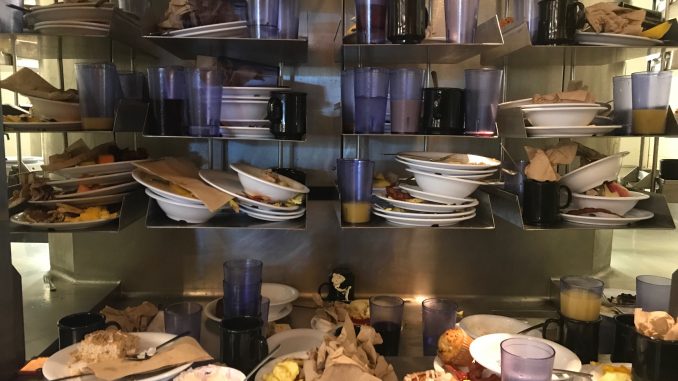
In highly populated countries such as the United States, food waste is one of the leading and fastest growing problems that directly contributes to detrimental environmental issues such as climate change.
The effects of food waste on the environment, the animals we consume and low income residents were discussed through the perspectives of renowned chefs Anthony Bourdain, Dan Barber, Mario Batali, Massimo Bottura, and Danny Bowien in the new documentary “WASTED! The Story of Food Waste,” directed by Anna Chai and Nari Kye.
New Paltz residents had the chance to watch the new documentary on Tuesday, Oct. 3 at the SUNY New Paltz Lecture Center “as part of a series of events to create awareness about food waste,” by local and regional organizations.
The film was sponsored by Campus Auxiliary Services and Sodexo at SUNY New Paltz and co-sponsored by various Hudson Valley organizations willing to combat the ongoing problems caused by food waste.
A student at SUNY New Paltz doesn’t need to go far to witness food waste. Hasbrouck Dining Hall alone produces more than half a ton of food waste a day, according to Steve Deutsch, Executive Director of Campus Auxiliary Services (CAS) at SUNY New Paltz.
Hasbrouck Dining Hall could be described as an all-you-can-eat buffet due to the unlimited amount of food you can eat during your visit.
“If people are paying for a $2,200 meal plan, they want the most variety, the most value for their money,” Deutsch said.
He also explained that this mindset of “all-you-can-eat,” and unrestricted options contributes to the overwhelming problem that is food waste due to the fact that not all of the food on a student’s plate(s) is consumed.
The leftover food that goes in the dishwasher is then inevitable waste. Most of this waste goes into landfills, which are critically dangerous to the environment since the lack of oxygen produces methane, a greenhouse gas that contributes to climate change, an issue discussed in the film.
According to the documentary’s environmental experts, 90 percent of America’s food goes into a landfill, with something as simple as a head of lettuce taking 25 years to decompose.
This waste of food costs America one trillion dollars each year and is a waste of not only money, but transportation, time and the tons of produce that could feed other people and the animals we consume, or could be used as renewable energy with a system called anaerobic digestion.
The organic matter humans waste such as banana peels and eggshells, could be used as compost, a system of decaying organic matter to produce fertilizer for soil.
Ten years ago, Hasbrouck has implemented several initiatives to reduce food waste, one of them being composting.
“About 25 percent to 40 percent of food waste goes directly into composting,” Deutsch said.
Other implemented changes include eliminating trays and plastic goods. Once a year, students get to put their food waste in a large plastic bin, the tray is later weighed and the total amount of waste is shown to the students to make them more aware of the extensive amount of food that is deemed as garbage.
“We want to raise a substantive change to the consciousness of students who use Hasbrouck,” Deutsch explained.
Deutsch has some future initiatives that he wishes to implement after watching the movie and discussing food waste issues with the discussion panel.
“Human beings need incentives, so I would like to create some sort of incentive program for students to learn the value of food,” Deutsch said.
To reduce food waste in our daily lives as inhabitants of this earth, simple things such as not taking more food than you can eat, making a grocery list, buying locally, learning how to cook and planning your meals could reduce the amount of waste and save you money, all while helping the environment.
“WASTED: The Story of Food Waste” is available everywhere Oct. 13.
